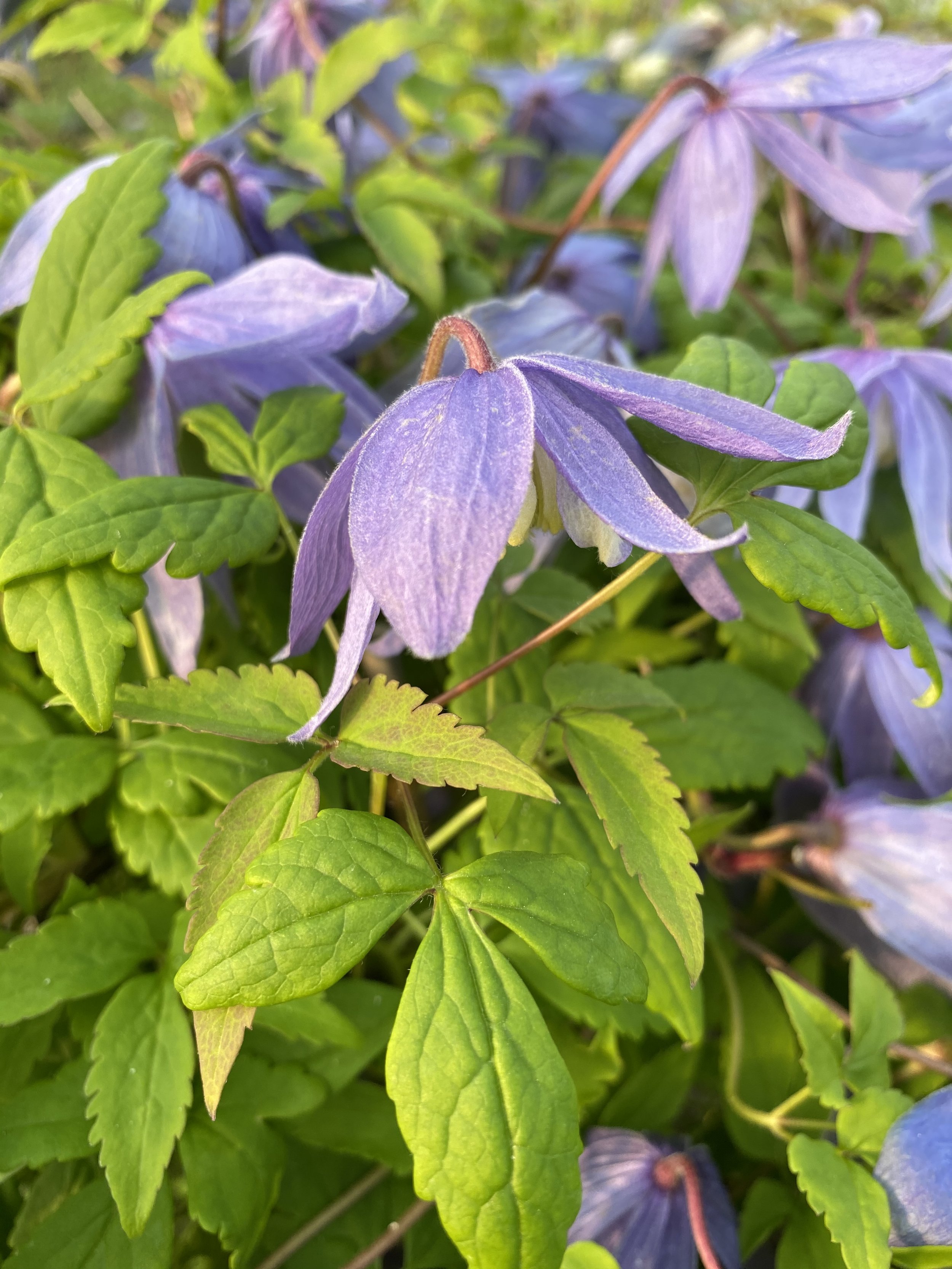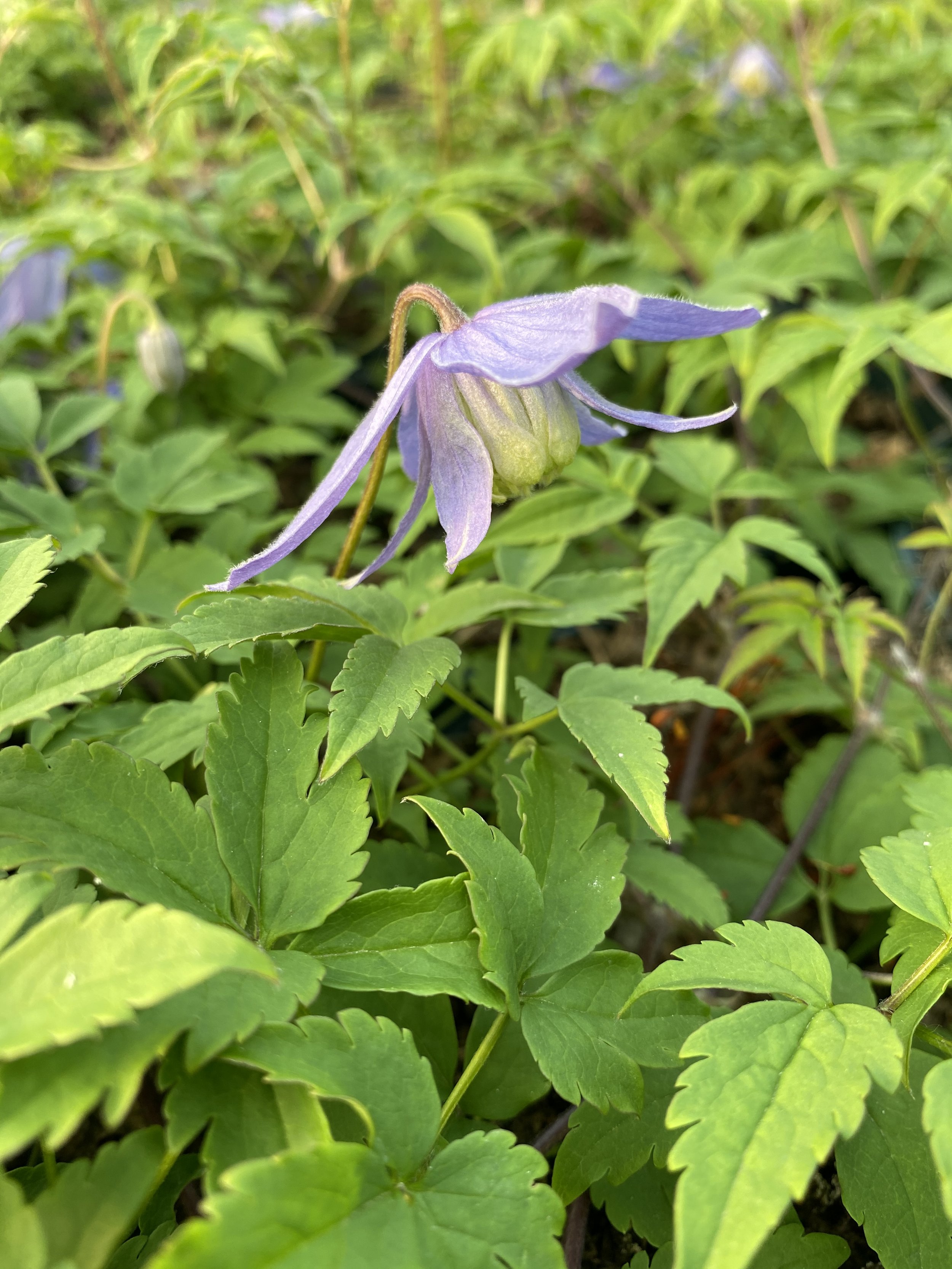 Image 1 of 3
Image 1 of 3

 Image 2 of 3
Image 2 of 3

 Image 3 of 3
Image 3 of 3




Jasminum nudiflorum
The Highlights
Common name: Winter Jasmine
Flower Colour: Bright yellow
Flowering Period: December to March
Foliage: Deciduous – small, dark green leaves follow flowering
Height & Spread: 2–3m × 2–3m (6.5–10ft × 6.5–10ft)
Hardiness: Fully hardy in UK conditions
Position: Full sun to light shade
Soil Type: Well-drained, moderately fertile soil
Wildlife Friendly: ✔ Early flowers may attract pollinators
All of our Plants are in a 3L deep pot, with 90cm canes, all plants are delivered with at least 50cm of top growth.
Why Choose Jasminum Nudiflorum for Your Garden?
If you're looking to add colour when little else is in bloom, Jasminum nudiflorum is the answer. Its cheerful yellow flowers appear from mid-winter through early spring, making it one of the best shrubs for extending seasonal interest. Easy to grow and tolerant of a range of conditions, it’s also a fantastic choice for low-maintenance gardens.
Benefits of Growing Winter Jasmine:
Bright yellow blooms when the garden needs it most
Blooms on bare stems – striking against winter backdrops
Versatile – grow upright or trailing over walls or banks
Hardy, reliable, and low maintenance
Great for beginners and low-effort gardens
Excellent wall shrub when trained and tied in
Delivery
We use DX to deliver your plants straight to your door.
DX collect from us every Tuesday and Thursday using their 24 hour tracked service.
Orders made after 10am Monday will be dispatched Thursday.
Orders made after 10am Thursday will be dispatched the following Tuesday.
Growing Tips
Light & Position
Best grown in full sun, which ensures the most abundant flowering. It can tolerate light shade, though flowering may be slightly reduced.
Soil Preferences
Prefers well-drained, moderately fertile soil. It tolerates dry soils and urban pollution, making it suitable for city gardens or tricky spots.
Pruning & Maintenance
After flowering in spring, cut back flowered shoots to strong buds lower down, and thin out overcrowded growth. Regular pruning encourages better shape and flowering in the following winter.
Training & Support
Can be grown as a freestanding shrub, but looks particularly attractive when trained against a wall or trellis. Use ties or soft twine to secure arching stems and create a neat framework.
The Highlights
Common name: Winter Jasmine
Flower Colour: Bright yellow
Flowering Period: December to March
Foliage: Deciduous – small, dark green leaves follow flowering
Height & Spread: 2–3m × 2–3m (6.5–10ft × 6.5–10ft)
Hardiness: Fully hardy in UK conditions
Position: Full sun to light shade
Soil Type: Well-drained, moderately fertile soil
Wildlife Friendly: ✔ Early flowers may attract pollinators
All of our Plants are in a 3L deep pot, with 90cm canes, all plants are delivered with at least 50cm of top growth.
Why Choose Jasminum Nudiflorum for Your Garden?
If you're looking to add colour when little else is in bloom, Jasminum nudiflorum is the answer. Its cheerful yellow flowers appear from mid-winter through early spring, making it one of the best shrubs for extending seasonal interest. Easy to grow and tolerant of a range of conditions, it’s also a fantastic choice for low-maintenance gardens.
Benefits of Growing Winter Jasmine:
Bright yellow blooms when the garden needs it most
Blooms on bare stems – striking against winter backdrops
Versatile – grow upright or trailing over walls or banks
Hardy, reliable, and low maintenance
Great for beginners and low-effort gardens
Excellent wall shrub when trained and tied in
Delivery
We use DX to deliver your plants straight to your door.
DX collect from us every Tuesday and Thursday using their 24 hour tracked service.
Orders made after 10am Monday will be dispatched Thursday.
Orders made after 10am Thursday will be dispatched the following Tuesday.
Growing Tips
Light & Position
Best grown in full sun, which ensures the most abundant flowering. It can tolerate light shade, though flowering may be slightly reduced.
Soil Preferences
Prefers well-drained, moderately fertile soil. It tolerates dry soils and urban pollution, making it suitable for city gardens or tricky spots.
Pruning & Maintenance
After flowering in spring, cut back flowered shoots to strong buds lower down, and thin out overcrowded growth. Regular pruning encourages better shape and flowering in the following winter.
Training & Support
Can be grown as a freestanding shrub, but looks particularly attractive when trained against a wall or trellis. Use ties or soft twine to secure arching stems and create a neat framework.













